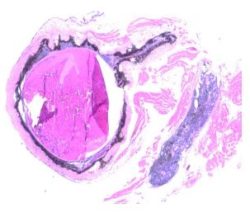
Prof. Nitza Goldenberg-Cohen’s Research Laboratory:
The Krieger Eye Research Laboratory
Department of Ophthalmology, Bnai Zion Medical Center | Faculty of Medicine, 13th Floor, room 2100, Technion
Prof. Nitza Goldberg-Cohen’s research laboratory focuses on advanced translational research, bridging clinical practice with basic science to develop new diagnostic and therapeutic approaches for ocular and neurological diseases. Research is conducted on both human samples and animal models, integrating cutting-edge technologies in histology, imaging, molecular biology, and nanomedicine.
Main research areas in the lab include:
- Neuroprotection: Exploring mechanisms and drugs to protect neuronal cells after induction of optic nerve damage. Optic nerve damage models includes optic nerve crush, glaucoma model, ischemic optic neuropathy, inflammatory and toxic injury, and diabetes-related complications.
- Ocular and brain toxicity models– Assessing the toxic effects of metals in tears, brain and eye by novel technology -PIXE- particle induced x-ray emission.
- Ocular oncology: Research on ocular melanoma and development of advanced diagnostic methods.
- Ocular microbiome: Comparative analysis of ocular microbial populations, particularly in patients with ocular prostheses.
- Non-invasive diagnosis of Alzheimer’s disease: Developing methods to detect biomarkers of Alzheimer’s in the eye and brain.
Stroke and blood flow: Investigating blood flow in the brain and the eye using the state of the art none invasive technology with and without neuroprotective treatment. Laboratory methods include:
- Working with mouse models (inducing optic nerve injury, glaucoma model, Alzheimer model, MCA – stroke model, cobalt toxicity model(.
- Histological sectioning, immunohistochemical staining, EM.
- ERG-electroretinography for mice.
- Gene expression analysis of the optic nerve, vitreous and retina, blood samples, conjunctiva, microbiome (qPCR, DNA and mRNA studies).
- Ocular and brain imaging including MRI, PET CT.
- bioengineering optical methods (PIXE, Raman spectroscopy)Advanced statistical analysis of research data.